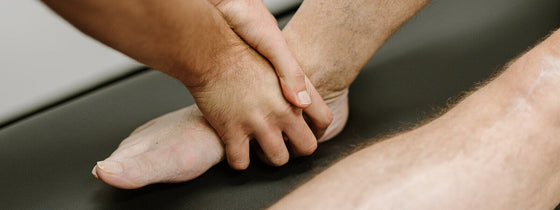Sports that require high speed running and rapid change of direction increase the risk of muscle strain injuries. Basketball, for example, certainly falls into that category with explosive and powerful movements being imperative to achieve optimal performance.
Muscle strain occurs during powerful contractions of muscle, or when being over-stretched.
These will often be during deceleration of the 'swing phase' of the running gait (in your hamstring), during cutting or rapid change of direction (in your adductors/groin muscles) or during acceleration in a running or jumping take off (within the calf).
To minimise the risk of muscular injury, it's important to possess two things:
- Good muscular strength
- Adequate muscle length
When trying to improve muscle length, a lot of people will turn towards stretching. The reality is that stretching doesn't increase the length of our muscles - your flexibility or range of movement will increase, but this is because you become more tolerant to the uncomfortable stretch sensation of the muscle.
The best way to improve both muscle strength and length is through targeted strength training. There are certain types of strength training that will not only improve strength, but will also increase muscle fibre length.
The biggest risk factor for sustaining a muscle strain injury is a previous injury, which only highlights the importance of rehabilitation. Resting may help initially to decrease the amount of pain associated with muscle damage, but it can't replace a tailored rehab program. The earlier you commence safely loading that muscle, the sooner strength and range of motion can be addressed. Focussing on these two areas are proven to translate to an earlier return to activity.
It would be a great idea to be proactive and seek assistance from a healthcare professional about correct exercise programming to reduce risk of muscle strain and increase your everyday performance. Alternatively, if you or a loved one have been unfortunate enough to sustain a muscle strain, it's important that you address the injury appropriately to minimise your risk of re-injury and more time out of action.

If you're experiencing back or neck pain with neurological signs and symptoms, a thorough neurological examination is crucial for accurate assessment and effective treatment. In this Optimal Tip learn more about what we mean by completing a neurological exam!

Squats, deadlifts, and calf raises are key movement patterns that should be part of every strength and conditioning program—regardless of age and activity level. These functional movements support joint health, improve posture and balance, and reduce the risk of injury while building strength where it matters most.

A ganglion cyst is a fluid-filled swelling that typically forms over a joint or tendon sheath, causing discomfort and pain, especially when pressing against nerves or joints. Proper assessment and treatment, including physiotherapy, are essential for managing symptoms and improving function in the presence of a ganglion in your hand, foot, or wrist.